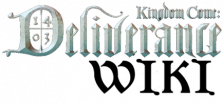Horseriding in the Middle Ages was done only in the full straddling position – by both men and women. Knights rode exclusively on stallions; to ride a mare was considered a faux-pas for a knight. Spurs were used to control the horse as well as serving as a badge of honour – either fixed or detachable. The bridle bits were originally only simple jointed snaffle pieces with two attached straight guides with rings. In the 15th century they were replaced by the hollow, mullen and later the curb bit types. Hooves were protected by horseshoes.
There were special forms of armour designed to protect a mounted warrior on his charger, for example a brigandine platecoat composed of longitudinal segments. The tack of a military/tournament horse including a bridle and ornate reins weighing around 2.5 kg and the horse’s whole burden, including the armoured rider, came to some 217 kg.
Only the nobility could afford mounts; horses were otherwise used for hauling farm equipment and wagons.
Horseriding in the Middle Ages was done only in the full straddling position – by both men and women. Knights rode exclusively on stallions; to ride a mare was considered a faux-pas for a knight. Spurs were used to control the horse as well as serving as a badge of honour – either fixed or detachable. The bridle bits were originally only simple jointed snaffle pieces with two attached straight guides with rings. In the 15th century they were replaced by the hollow, mullen and later the curb bit types. Hooves were protected by horseshoes.
There were special forms of armour designed to protect a mounted warrior on his charger, for example a brigandine platecoat composed of longitudinal segments. The tack of a military/tournament horse including a bridle and ornate reins weighing around 2.5 kg and the horse’s whole burden, including the armoured rider, came to some 217 kg.
Only the nobility could afford mounts; horses were otherwise used for hauling farm equipment and wagons.
